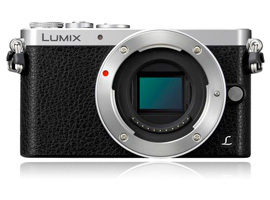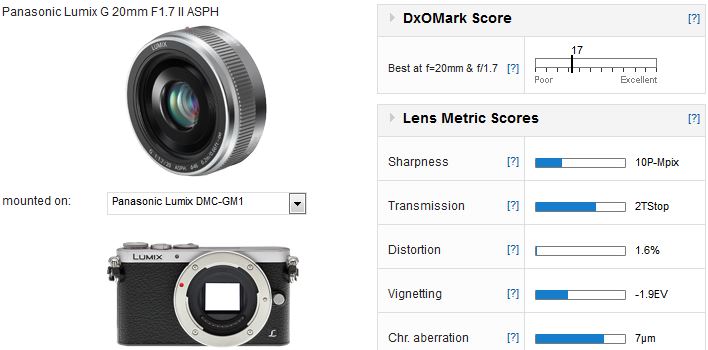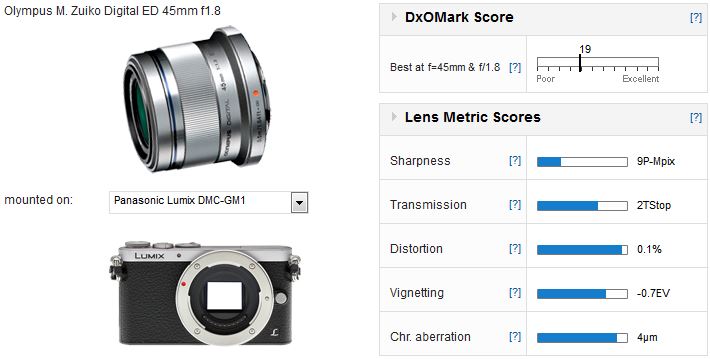Introduction
Makers have already made significant advances miniaturizing cameras but the GM1 complete with its tiny 12-32mm kit lens is literally small enough to fit in a pocket the body alone – it measures just 3.9 x 2.2 x 1.2″ (98.5 x 54.9 x 30.4 mm). It might be small and lack an electronic viewfinder like its sibling the GX7 but it’s a well-specified camera that should appeal to a wide audience, including enthusiasts.
Not only does it pack the same 16-Mpix sensor as that model but it can also boast an electronic shutter, built-in Wi-Fi (albeit without NFC), a slow-motion 1080 50/60 fps option to more usual 25/30fps and despite its diminutive size a large 3-inch touch screen display.
Also it offers a wide-range of manual control in a sleek, retro looking body with alloy top and bottom covers. At $749 including the equally compact 12-32mm collapsible zoom, it’s not inexpensive but it’s appealing nonetheless.
The bodies are only half the equation of course; the Micro Four Thirds models can boast an expansive line-up of lenses. We were curious to see just how well the GM1 performs compared with its pricier sibling. We’ve tested the optical quality of over 30 different lens models on the camera from not only Panasonic and Olympus, but we’ve also included the results from Sigma’s DN range of prime lenses made specifically for mirrorless cameras.
Also, since the GX7, the labs have analyzed the new high-speed Leica DG Nocticron 42.5mm f1.2 stabilized portrait lens and the recently announced Panasonic Leica 15mm f1.7 ‘pancake’ lens,
Best prime lenses for the Panasonic Lumix DMC-GM1
With a DxOMark lens score of 22, the best-performing model on the GM1 is the new Leica 42.5mm (85mm equivalent) f1.2. It replaces the outstanding Olympus 75mm (150mm equivalent) short tele as the best overall though at $1600, that and the $899 Olympus are pricey options. They’re also rather at odds with the diminutive dimensions of the GM1.
 |
 |
 |
 |
| Panasonic Leica DG Nocticron 42.5mm F1.2 ASPH | 1600 | 22 | 12 |
| Olympus M.ZUIKO DIGITAL ED 75mm F1.8 | 899 | 22 | 11 |
| Panasonic Leica DG Summilux 15mm F1.7 ASPH | 599 | 19 | 11 |
| Panasonic Leica Summilux DG 25mm F1.4 | 579 | 19 | 10 |
| Olympus M. Zuiko Digital ED 45mm f1.8 | 389 | 19 | 9 |
| Panasonic Lumix G 20mm F1.7 ASPH | 400 | 18 | 11 |
| Olympus M. Zuiko Digital ED 12mm f2.0 | 769 | 18 | 10 |
| Sigma 60mm F2.8 DN A Micro 4/3 | 239 | 18 | 10 |
| Olympus M.ZUIKO DIGITAL 17mm f1.8 | 500 | 18 | 7 |
| Olympus M.ZUIKO DIGITAL ED 60mm F2.8 Macro | 499 | 17 | 10 |
| Panasonic Lumix G 20mm F1.7 II ASPH | 400 | 17 | 10 |
| Sigma 30mm F2.8 DN A Mount 43 | 199 | 16 | 8 |
| Sigma 19mm F2.8 DN A Mount 43 | 199 | 16 | 7 |
| Panasonic Leica DG Macro-Elmarit 45mm F2.8 ASPH OIS | 668 | 15 | 8 |
| Sigma 30mm F2.8 EX DN Micro 4/3 | 240 | 15 | 8 |
| Olympus M.ZUIKO DIGITAL 17mm f2.8 | 300 | 14 | 7 |
| Sigma 19mm F2.8 EX DN Micro 4/3 | 166 | 14 | 6 |
| Olympus 15mm 1:8.0 Body Cap | 79 | 5 | 3 |
The 15mm Leica in third place is significantly smaller and lighter, perhaps unsurprisingly, and complements the GM1 well enough to be chosen as a kit option for it in some markets. With an f1.7 maximum aperture it’s and slightly wider field of view to the highly regarded Panasonic 20mm f1.7 it’s likely to be a popular option, or addition even.
Another small, highly praised optic, the Olympus 45mm f1.8 should be on shortlist as versatile telephoto lens. It can’t match the 42.5mm at wider apertures but it has a good sharpness when stopped down.
With a useful 0.5m minimum focusing distance, it’s a popular choice for portraits. At a modest $239, Sigma’s 60mm f2.8 is another tempting short telephoto option. It has excellent sharpness and although light it has quite large diameter making feel slightly bulky in comparison to the 45mm Olympus.
Best street prime for $400
The 20mm f1.7 is a highly popular choice for street photography and at $400 it’s likely to remain the more popular between it and the new Leica 15mm. It has seen a recent revamp and although Panasonic claims the optical construction remains unaltered in our tests it didn’t perform quite as well as its predecessor.
Neither is it a quite a match for the new Leica 15mm optically, but it’s an excellent performer centrally at least. Distortion is a little high, although this and the vignetting are corrected in-camera. Chromatic aberration is also corrected automatically in most Raw workflow solutions (as well as in-camera Jpegs) but it’s already low to begin with.
Best portrait prime under $400
Our short telephoto choice is the Olympus 45mm f1.8. Not only is it accessibly priced but its small dimensions, fast focusing and excellent image quality make it irresistible. It’s a good performer wide-open though don’t expect it to have biting sharpness across the field.
Sharpness improves centrally when stopping a little and when stopped to f4 it’s excellent across the frame. Combine those attributes with excellent transmission, low distortion and vignetting and remarkably low chromatic aberration and it’s impossible to ignore.
If you have a Lumix GM1 and a favorite lens, we would very much like to hear from you. Please leave a comment below, stating what lens it is and why you like it.





DXOMARK encourages its readers to share comments on the articles. To read or post comments, Disqus cookies are required. Change your Cookies Preferences and read more about our Comment Policy.